'Wing Chun' in Russia: a cross-civilizational dialogue
Writer: Zhang Yu | Editor: Zhang Zhiqing | From: Original | Updated: 2025-04-30
On the vast expanse of Russian soil, a unique cultural feast is unfolding as the Shenzhen-created dance drama “Wing Chun” is currently on a Russian tour showcasing the unique charm of Chinese culture and initiating a dialogue between two civilizations.
The first three shows of the tour took place from April 25 to 26 at the renowned Bolshoi Theater in Moscow. That stint is being followed by a run of three performances from today through May 1 at the Mariinsky Theater in St. Petersburg, making it the first original Chinese production to grace the stages of two of Russia’s most esteemed theaters.
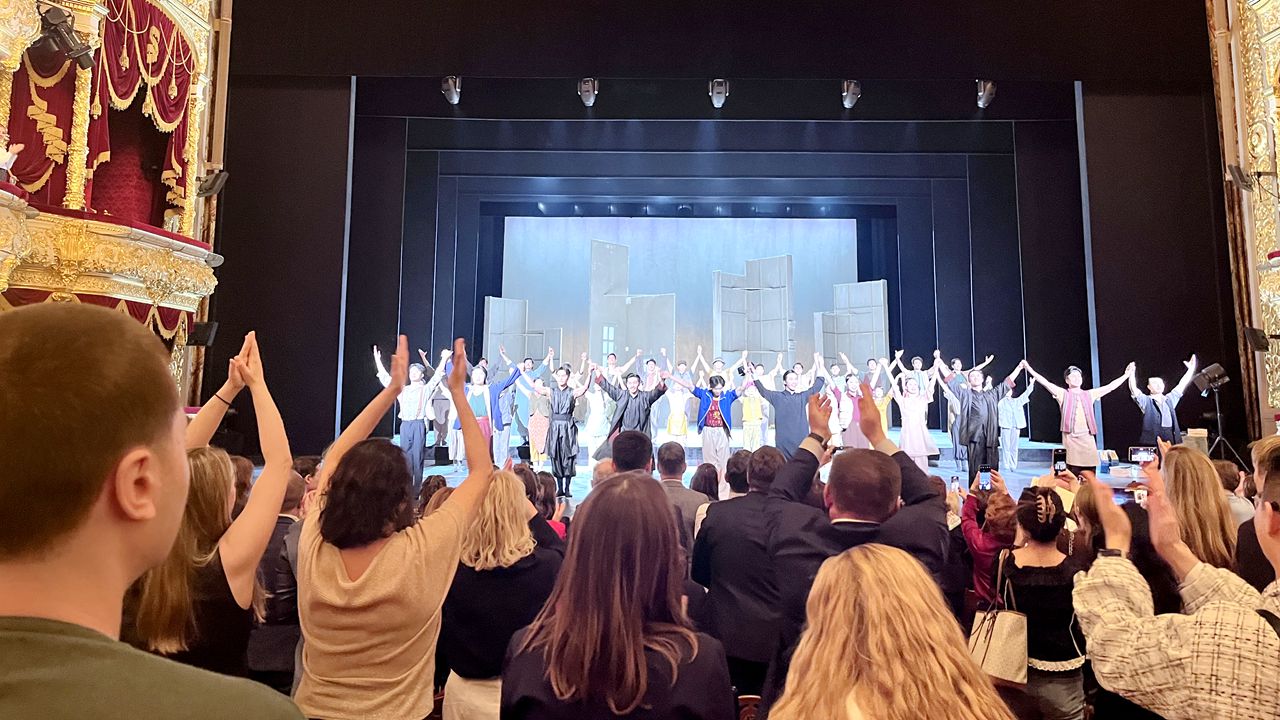
Spectators give a standing ovation as the "Wing Chun" cast take their final bow at the Bolshoi Theater in Moscow, Russia, on April 26. Photos by Zhang Yu
Most importantly, it marks a significant milestone in the cultural exchange between China and Russia, as the years 2024 and 2025 have been designated as the Years of Culture between the two countries.
The Shenzhen dance drama, which seamlessly blends traditional Chinese martial arts with contemporary dance, not only showcases the richness of Chinese cultural heritage but also fosters mutual understanding and appreciation between China and Russia.
Finding success in Moscow
“Wing Chun” has been hailed as a triumph in the Russian capital. Tickets for the first show on the evening of April 25 and the last show on the evening of April 26 were completely sold out.
In addition, the rehearsal attracted many Russian media reporters, who came to get a sneak peek. They were able to engage in face-to-face exchanges with leading cast members and visit the dressing room to uncover the secrets behind the show’s exquisite costumes.
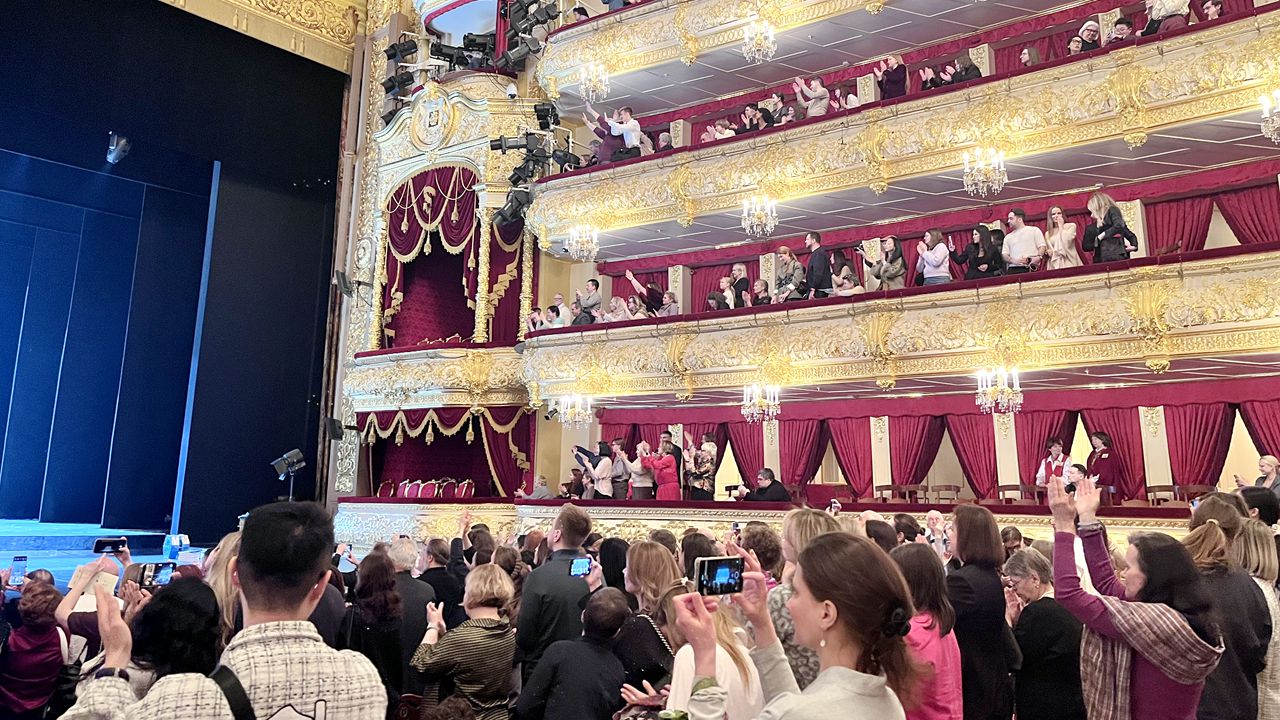
The Bolshoi Theater has a full house for the first "Wing Chun" performance in Russia.
As a reporter present to cover the tour, I found that the dance drama’s intricate choreography and compelling narrative visibly entranced the Moscow audiences, their admiration manifested through repeated bursts of fervent applause during each performance and the standing ovations that greeted every final bow.
During the concluding performance in Moscow on the evening of April 26, the audience rose in a standing ovation even before the show had reached its end.
The performance received unanimous acclaim. The Russian newspaper Izvestia lauded the production for its artistic prowess and cultural importance, noting, “The Shenzhen Opera and Dance Theater brought a play about a national treasure to Russia.”
Russia-K, a Russian nationwide nonprofit television channel that broadcasts shows about arts and culture, stated, “Even if you don’t know about ‘Wing Chun,’ you will definitely be attracted by their beautiful dance.”
Prominent figures from Russian political and cultural circles also came to watch the debut on the evening of April 25. Oleg Matytsin, chairman of the State Duma Committee on Physical Culture and Sports of Russia, Olga Kazakova, chairwoman of the State Duma Committee on Culture of Russia, and Irina Viner, former president of Russia’s rhythmic gymnastics federation, all gave the Shenzhen production a thumbs up.
Officials from the Chinese Embassy in Russia and Gao Yan, the spouse of the Chinese ambassador to Russia, also attended the performance.
“A group of absolutely incredible people, even though they don’t say a word — they tell everything with their bodies. Their movements, conveying emotions, conveying the story. You completely forget that you can’t hear the lines,” Kazakova told Shenzhen Daily.
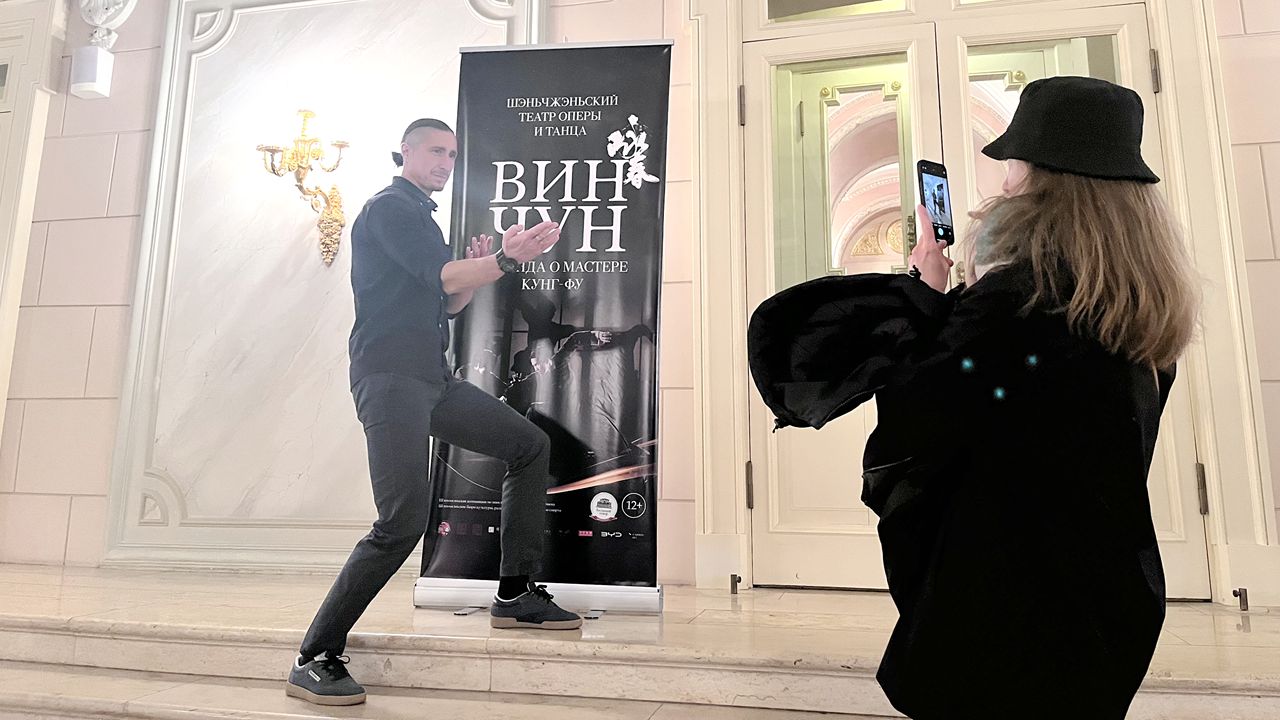
A theatergoer poses for a photo in front of a "Wing Chun" poster at the Bolshoi Theater.
“Hats off to everyone who created this amazing performance!” Kazakova shared, adding that she would rate the dance drama a 10 out of 10 for its incredible talent and emotional impact.
Matytsin praised “Wing Chun” for combining Chinese culture with human civilization, giving the audience a wonderful performance and injecting new vitality into the Bolshoi Theater.
Viner said she was delighted to have engaged in profound exchanges with Chinese culture on the day.
“While everyone is familiar with kung fu, only you have the exceptional ability to present it as a stage art. Both Chinese and Russian cultures are rich and magnificent. May the friendship between China and Russia last forever,” she told the cast and crew after the show.
With anticipation running high, the Shenzhen production is set to illuminate the prestigious stage of the globally acclaimed Mariinsky Theater in St. Petersburg starting today.
Video by Marina Vilchinskaia
Bridging cultures through dance
Feng Litao, counselor for cultural affairs at the Chinese Embassy in Russia and director of the China Cultural Center in Moscow, has praised the Shenzhen-made dance drama “Wing Chun” as “creating history,” noting, “In the cultural exchange between China and Russia, this must be a grand event worth recording in history.”
Feng made the remark when meeting the cast and crew after the dance drama’s Moscow debut Friday night.
The phenomenal dance drama from Shenzhen not only showcased the beauty and depth of Chinese culture through an innovative fusion of martial arts and contemporary dance, but also reinforced the bonds of friendship and mutual respect between China and Russia.
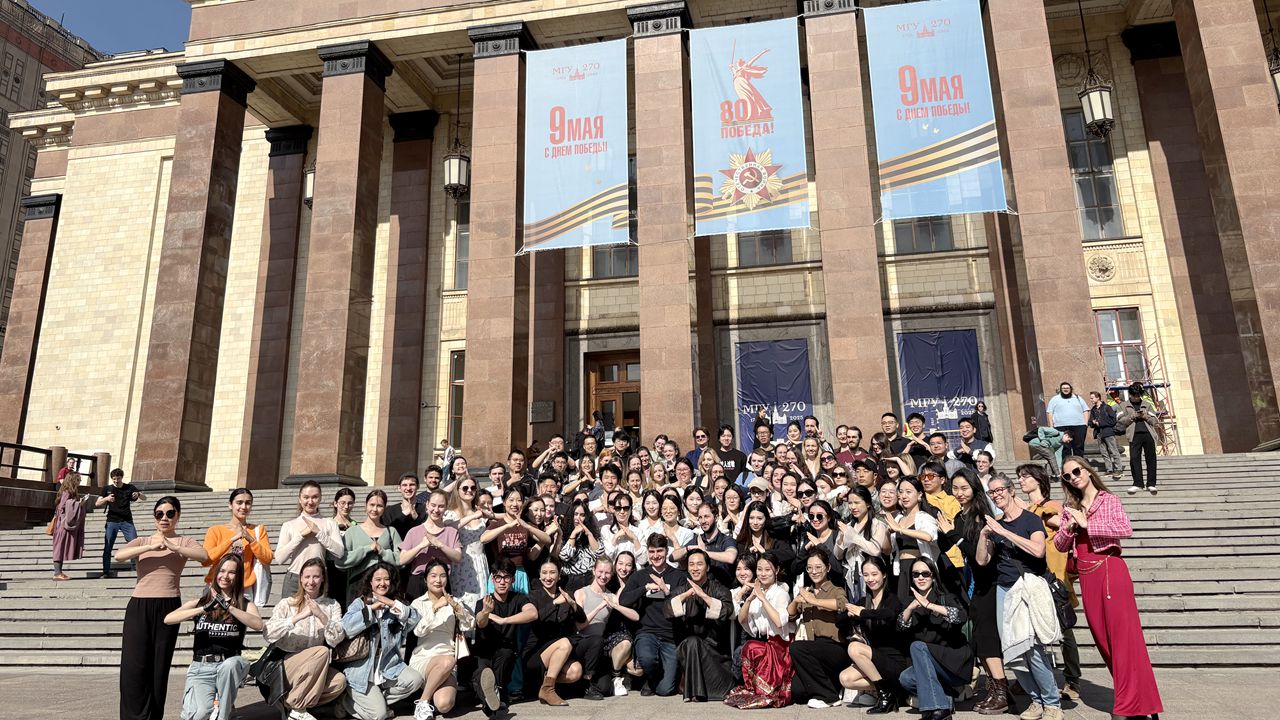
Lomonosov Moscow State University students pose for a group photo with the "Wing Chun" cast at the university April 24 local time.
Before the dance drama’s Russian performances began, the cast and crew of “Wing Chun” made its grand entrance at the prestigious, 270-year-old Lomonosov Moscow State University (MSU), where it was met with enthusiastic applause and immense interest from the university’s students and faculty on the afternoon of April 24.
At the Great Hall of the MSU Culture Center, students were mesmerized by a meticulously crafted promotional video for “Wing Chun” that features a professional Russian voiceover and a short live performance.
During the lively interactive session, students eagerly raised their hands to ask questions. However, the Q&A segment proved insufficient to quench their curiosity. Enthusiasm reached a peak as students spontaneously took to the stage, eager to learn martial arts movements directly from the actors, who graciously guided them through the steps.
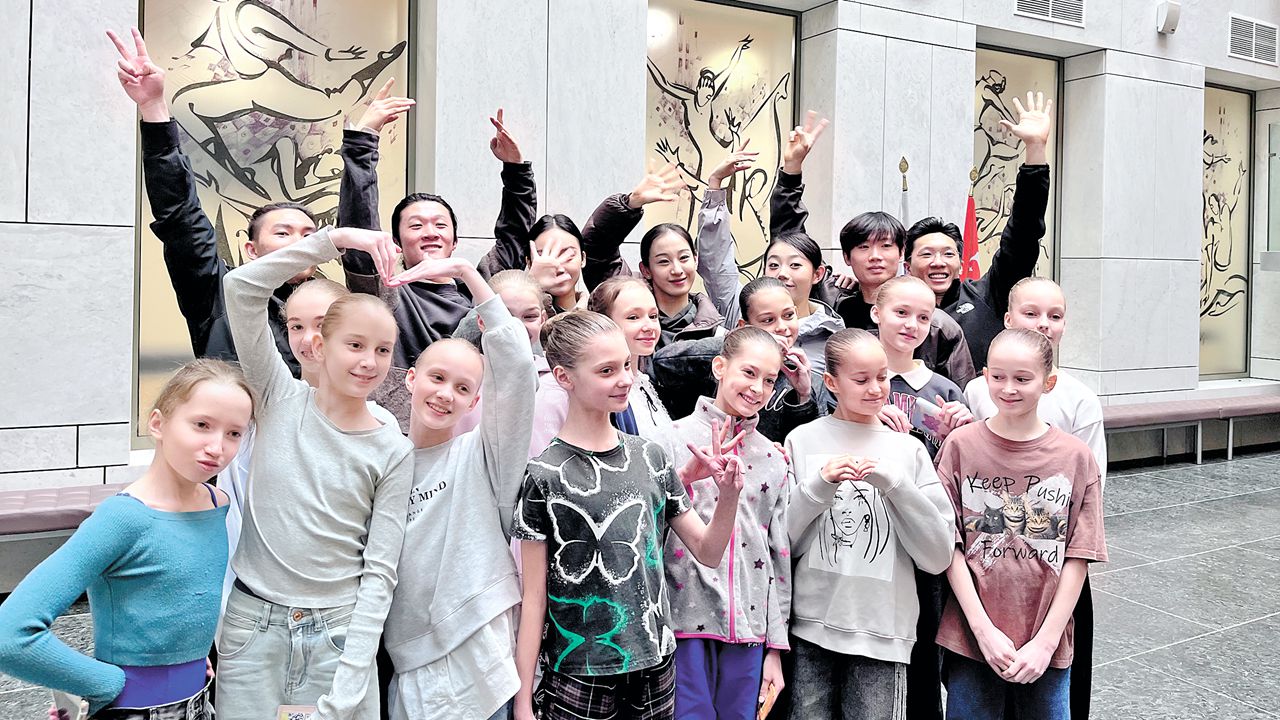
Students from the Boris Eifman Dance Academy pose for a photo with some members of the "Wing Chun" troupe at the academy in St. Petersburg on April 28.
Alina Aros, a Russian student at MSU, was one of the students who took great pleasure in the interactions. “I’m very interested in feeling what it is like when dance is mixed with martial arts. It is absolutely an amazing feeling!” Aros told Shenzhen Daily.
Varvara Korchagina, another MSU student, shared that she has always wanted to immerse herself in Chinese culture through theatrical performances. Therefore, she was ecstatic about attending an event like this.
“The dance drama is simply breathtaking. The performers are stunning, and the way they embody their movements is truly magnificent. I’ll definitely recommend it to my mom,” Korchagina said.
Xiao Yiying and Chen Yu, two Chinese students who currently pursue postgraduate studies at MSU, stated that they had already purchased tickets for the dance drama’s Saturday performance.
“As Chinese people, we are really proud. I hope that ‘Wing Chun’ can be performed in more cities in Russia, not just Moscow and St. Petersburg,” Xiao said.
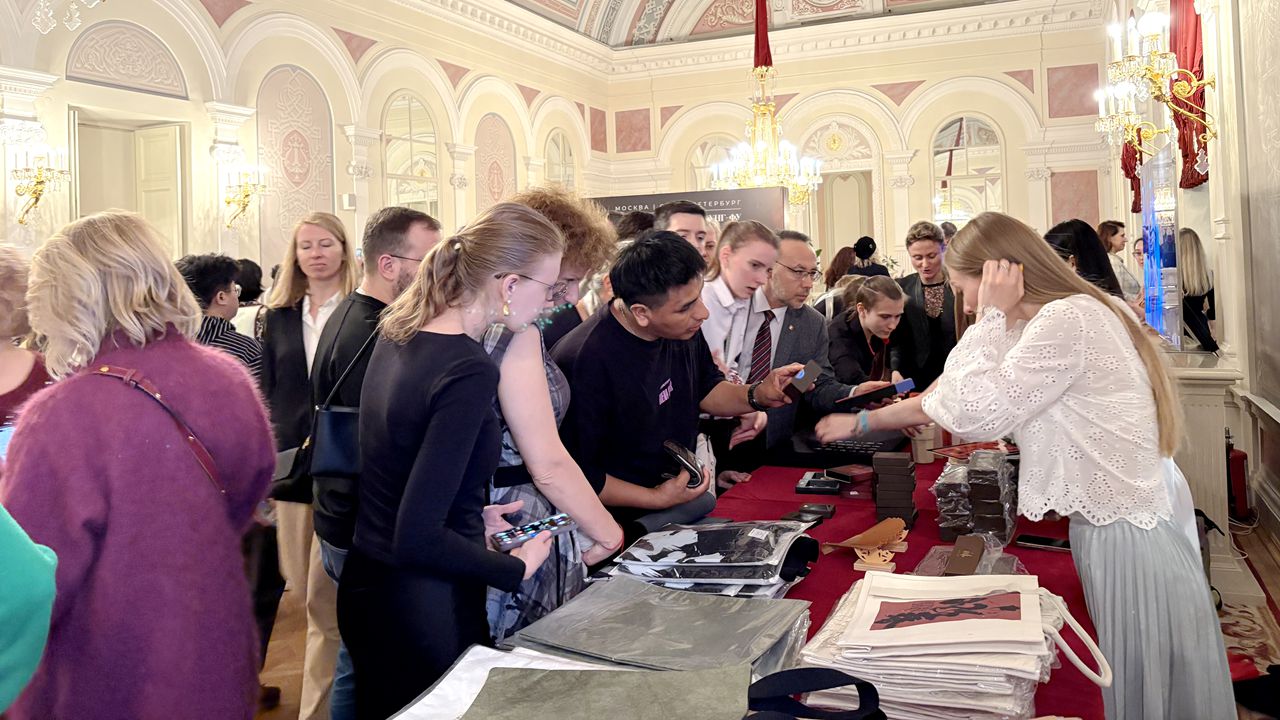
Theatergoers take an interest in "Wing Chun"-themed merchandise on display at the Bolshoi Theater.
Before the performances at the Mariinsky Theater, some members of the dance troupe also went to the world-famous Boris Eifman Dance Academy in St. Petersburg for an exchange.
Back in October 2023, the globally acclaimed Eifman Ballet of St. Petersburg made its inaugural performance in Shenzhen, presenting its signature masterpiece “Anna Karenina.”
As the Russian tour of “Wing Chun” continues, the dance drama stands as a vibrant example of how art can transcend borders, fostering understanding and appreciation between different cultures. It is also a reminder of the powerful role that cultural exchange plays in building a more connected and harmonious world.